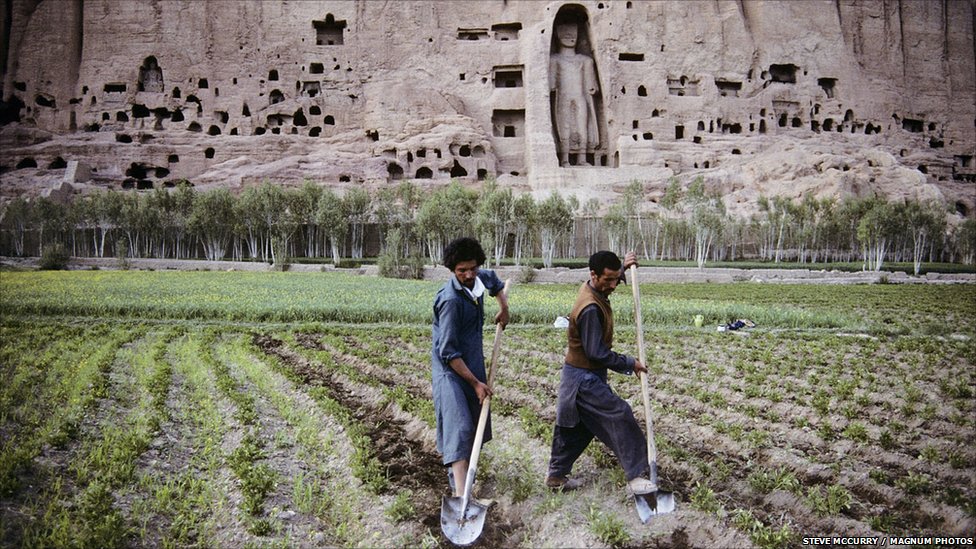The question that how Hazaras embraced Islam have been controversial among the scholars of Hazara history and there are different scholars with different viewpoints on this matter, which may not lead us to a specific conclusion, or we can say that these assessments lead us to understand the historicity of Hazaras’ Shi-ization as part of a long historical evolution rather than a single historical event.
Although the influence of Islam began to spread around present-day Afghanistan in the seventh century, however, there are conflicting evidences of its presence in Hazara populated areas. In fact, the process of Islamization begins in this region after the defeat of the Sassanid monarchy in Persia. In this regard, Yahya Baiza narrates that after the rise of Islam, the Arabo-Islamic forces defeated the Sassanid Dynasty in 643 A.D., and then tried to advance to the east, but the Ghurid Turks resisted them and stopped their winning streak. In order to stop the Arab invasion, the Ghurid leader Mahawi Suri prepared a group of nobles and sent them to Kufa to get the first-hand knowledge of the religion of Arabs from their Caliph Ali ibn Abi Talib (656-661). On their arrival at Kufa, they all converted to Islam in the presence of Ali ibn Abi Talib, which not only secured their independence but also marked the beginning of Ali’s support in Khorasan.
According to Syed Askar Mosavi, the original Shi’ites in Persia and Khorasan were the descendants of Ali, known as Sadat-e Alvi. They were, for the most part, on the run and in a state of political exile, in order to escape the Ummayads and later the Abbasids. He asserts that original followers of Shiaism entered Hazaraistan long before the Mongols; possibly at the time of Imam Reza (the eighth Shia Imam), who was called to Tus (today’s Mashhad) by Haroon Rashid, the Abbasid Caliph, to take the throne, and whose followers must have joined him there. After the murder of Imam Reza by Haroon, the Shi’ites were once again forced into exile, and it was probably at this time that they traveled to the east.
Contrary to the claims of Baiza and Mosavi, the Korean traveler, Hui Chao, who visited Bamiyan in 827 A.D., states that Buddhism was still practiced in Bamiyan and in its adjacent areas, while the Buddhist king held a considerable power in the region. Whatever the truth of this information, it is clear that the story of Band-e-Amir, which is said to have been made by Ali ibn Abi Talib, seems fictional, and in fact, he never set foot in Khorasan.
According to researchers from UNESCO, the waves of Muslim conquest touched the fringes of Ghor several times during the Umayyad period but the region did not come under Islamic cultural influence. Although Ghor was to the west at the border of Persia, the extension of Islam and its cultural institutions, and the conversion of Ghor took a long time. As late as the end of the 10th century, the population of Ghor was for the most part heathen, and it was the biggest pagan enclave within the borders of Islam. It was probably the missionary activity from Persia that the movement of the Karramiyya, a pietistic and ascetic form of Sunni Islam especially strongly represented in Nishapur, was established in Ghor in the course of the 10th and 11th centuries. Among the Ghorids the rulers of Ghorid Dynasty converted to Islam and first acknowledged the Shafi and then the Hanafi schools of Sunni Islam. Khaliq Ahmed Nizami writes that the nature of imperfect conversion of the Ghorids to Islam can be illustrated by the fact that sometimes the names were Muslim but the people led the life of Pagans.
After the conversion of the Ghorids to Islam, the Ismailis greatly supported them in their military victories. The Ismailis lived beyond the mountains of Ghor, where they established their own dynasty (1009-1215). Baiza describes that they were organized and much disciplined faction of Shi’ites, which considerably contributed to the spread of Shiaism across Khorasan and particularly in Hazaraistan. The very first Ismaili mission started from Hazaraistan under the guidance of Ghayath. Ghayath fled from Ray, Persia in 9th century, when a Sunni cleric incited public opinion against him. Ghayath handed over the responsibilities to the famous theologian-philosopher Al-Razi and started his dawat (invitation) mission in Merv, present-day Bala Marghab, Afghanistan. Ghayath converted Khorasan into a stronghold of Ismailis, when he converted Al-Marwazi to the Ismaili faith. Al-Marwazi held a considerable power in Maimana, Ghor, Taliqan, Gharjistan and Herat. Baiza believes that Hazaras and Tajiks were among the first Ismaili converts.
Cliford Edmund Bosworth mentions the presence of a small minority of Sayyed Shi’ites in Khorasan in the first part of the 11th century. He describes that apart from Ismailis, Shiaism was still a different body of unsystematized belief rather than a closely-knit sect. Within it the moderate, Twelver, Jafari Shi’ites were conservative rather than being revolutionary force. Such attitude was forced on them in Khorasan by the political environment to counter the Tahirids, Samanids and the Ghaznavids, who were all orthodox Sunni powers. The Persians, for the protection of their identity and national feelings, stimulated the people to enter Shiaism and make it a bulwark of orthodoxy. The moderate Shi’ites, however, lived peacefully and engaged themselves in political activity under the regional powers. Sultan Mehmood Ghaznavi would often use the Shi’ite Sayyeds as diplomatic envoys.
Some of the historians believe that Hazaras accepted Islam due to Persians during the period of Safavids and the Safavid king, Shah Abbas, had a prominent role in this matter. While some of them give credit to Ismail Safavi, the founder of Safavid dynasty, who invaded Khorasan in the year 1510. Timur Khanov, however, rejects the contribution of Safavids in Shi’ization of Hazaras. He states that Hazaras were already Shia during the period of Safavi Dynasty. They were independent and under no foreign authority. History does not have anything to say about the unfriendly relations of Hazaras and Safavids, which indicates that they have been good neighbors. According to P. J. Maitland, Shah Abbas once took refuge in Hazaraistan when he was a fugitive. He received hospitality by one Dawlat Baig, who was the leader of a sub-tribe of Dai Kundi Hazaras. Shah Abbas preferred to escape to Hazaraistan because Hazaras were Shi’ites and they assisted Shah Abbas in his re-enthronement. After his enthronement, Shah Abbas sent expensive gifts to Dawlat Baig and announced him the leader of all the Hazaras.

